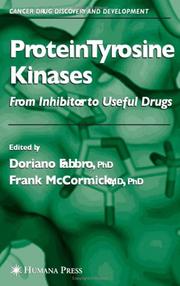| Listing 1 - 2 of 2 |
Sort by
|
Book
Year: 2013 Publisher: Bruxelles: UCL,
Abstract | Keywords | Export | Availability | Bookmark
 Loading...
Loading...Choose an application
- Reference Manager
- EndNote
- RefWorks (Direct export to RefWorks)
Despite the existence of tumor-infiltrating T lymphocytes (TILs), the tumor manages to grow. The host laboratory has found that these TILs have dysfunctional cytokine secretion and lytic capacities. Treating TIL with a galectin antagonist can partially correct these defects. Galectins are lectins secreted in the tumor environment by tumor cells and macrophages. They bind to polysaccharide motifs that decorate the cell surface receptors. They can form galectin-glycoprotein lattices, wich decrease the mobility of these receptors. The host laboratory thought that TIL covered galectins had a poor ability to be activated. The Lck kinase is known to interact with both glycoproteins CD45 and LFA-1 expressed at the T cell surface. LFA-1 is an adhesion molecule involved in stabilizing intercellular interactions and the CD45 phosphatase is involved in the regulation of intracellular signaling. The host laboratory observed a lack of motility of these two receptors at the contact area between a TIL and its target, lack of motility that could be corrected by a treatment with galectin antagonists. We made preliminary experiments to trap CD45 and LFA-1 in artificial lattices by capturing these surface receptors with cross-linked anti-FLA-1 and anti-CD45 antibodies. These artificial lattices should reduce the motility of these receptors and mimic galectin- glycoprotein lattices. It will then be possible to examine whether this lack of receptor motility disrupt the secretion of cytokines by T lymphocytes as do galectins in TILs.

ISBN: 9781588293848 158829384X 9781592599622 9786610358779 1280358777 1592599621 Year: 2006 Publisher: Totowa, N.J. : Humana Press,
Abstract | Keywords | Export | Availability | Bookmark
 Loading...
Loading...Choose an application
- Reference Manager
- EndNote
- RefWorks (Direct export to RefWorks)
Protein kinases function as components of signal transduction pathways, playing a central role in the control of cell growth, metabolism, differentiation, and apoptosis. The development of selective protein tyrosine kinase (PTK) inhibitors that can block or modulate diseases, such as cancer, with abnormalities in these signaling pathways is considered a promising approach for drug development. Currently, more than 20 different PTKs are being considered as potential therapeutic targets in oncology. In Protein Tyrosine Kinases: From Inhibitors to Useful Drugs, leading researchers from the Novartis group that pioneered Gleevec/Glivec™ and from around the world comprehensively survey the state-of-the-art in the drug discovery processes (bio- and chemoinformatics, structural biology, profiling, generation of resistance, etc.) aimed at generating PTK inhibitors for the treatment of various diseases, including cancer. Highlights include a discussion of the rationale and the progress made toward generating "selective" low molecular-weight kinase inhibitors; an analysis of the normal function, role in disease, and application of platelet-derived growth factor antagonists; and a summary of the factors involved in successful structure-based drug design. Additional chapters address the advantages and disadvantages of in vivo preclinical models for testing PTK inhibitors with antitumor activity and the utility of different methods in the drug discovery and development process for determining "on-target" vs "off-target" effects of kinase inhibitors. Authoritative and state-of-the-art, Protein Tyrosine Kinases: From Inhibitors to Useful Drugs details the key stages in the design of PTK inhibitors and their development into useful drugs.
Protein-Tyrosine Kinase --- Lymphocyte Specific Protein Tyrosine Kinase p56(lck) --- Neoplasms --- src-Family Kinases --- Protein-tyrosine kinase --- Cancer --- physiology. --- drug therapy. --- Inhibitors --- Therapeutic use. --- Chemotherapy. --- Chimiothérapie --- Cancer -- Chemotherapy. --- Protein-tyrosine kinase -- Inhibitors -- Therapeutic use. --- Biology --- Medicine --- Chemistry --- Physical Sciences & Mathematics --- Health & Biological Sciences --- Biochemistry --- Cytology --- Oncology --- Biology - General --- Therapeutic use --- Chemotherapy --- Hydroxyaryl-protein kinase --- Tyrosine kinase --- Tyrosine protein kinase --- Tyrosine-specific protein kinase --- Tyrosylprotein kinase --- Life sciences. --- Biochemistry. --- Life Sciences. --- Biochemistry, general. --- Protein kinases --- Antineoplastic agents --- Treatment
| Listing 1 - 2 of 2 |
Sort by
|

 Search
Search Feedback
Feedback About
About Help
Help News
News